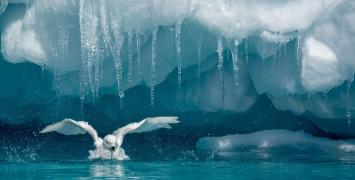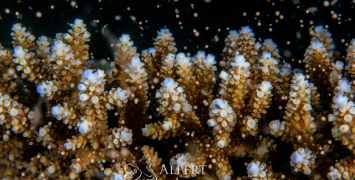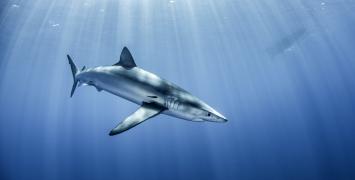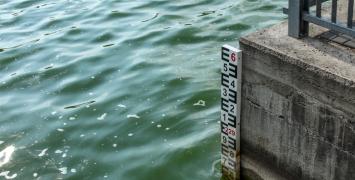How tiny plankton capture carbon
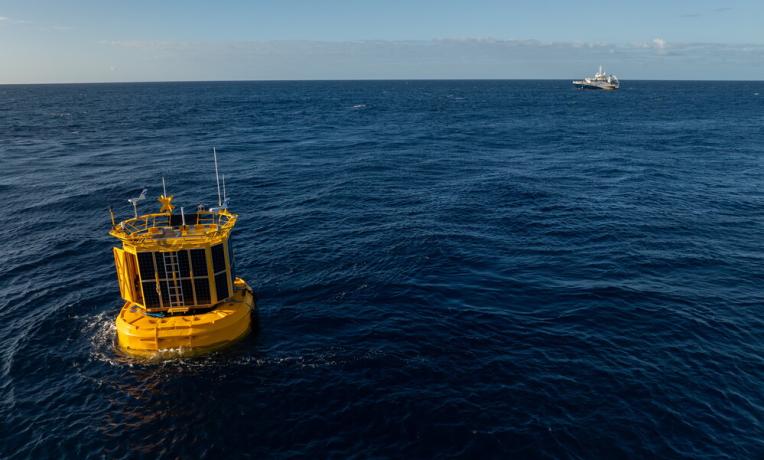
By Inge Ruigrok
Sophie Bonnet is currently immersed in field research in Nouméa, the capital of New Caledonia. With a small team of six researchers and engineers on site, she is trying to understand how nature governs our climate. Sophie's focus is on the ocean, specifically a process called the biological carbon pump, which helps remove carbon dioxide from the atmosphere.
‘It's similar to what plants do on land, but it happens in the ocean,' Bonnet explains. 'If you add up all the fish, corals, crabs, and other marine animals, they are about one-third of the ocean's biomass. The majority is made up of tiny, often invisible organisms called plankton. The most numerous are microscopic algae that use sunlight, nutrients from the seawater, and carbon dioxide from the atmosphere to create their body through photosynthesis. When these organisms die, they sink to the ocean floor, taking the carbon they absorb.’
This process effectively removes carbon dioxide from the atmosphere and stores it in the ocean. While some of this carbon is recycled back into the atmosphere as CO2, a portion is trapped in the ocean sediments for long periods. This entire process is known as the biological carbon pump.
Alternative carbon pump
Scientists have long believed that this natural mechanism is weak or even inactive in the tropics, which cover about half of the Earth's surface. However, Bonnet has made a groundbreaking discovery in the South Pacific. She found that a specific type of plankton called diazotroph, akin to the plants of the ocean, plays a crucial role in providing nutrients to surface waters, and stimulates the pump.
‘The reason the biological carbon pump doesn't work well in the tropics is that phytoplankton lacks sufficient nutrients, especially nitrogen, in the surface waters there’, Bonnet explains. ‘Just like terrestrial plants, phytoplankton need nutrients to grow.
However, when diazotrophs are present, they bring nutrients for themselves and others, boosting biological activity in the ocean and activating the carbon pump. Diazotrophs take nitrogen from the air and turn it into proteins, DNA, and RNA. By supplying nitrogen for themselves and other organisms, they establish a food chain in the tropics that wouldn't exist without them.
Diazotrophs thus sustain the carbon pump indirectly and also sink, transporting their own carbon more directly to the deep ocean. They support what we call an alternative carbon pump in the tropics, which is not included in current climate models because its importance was only recently discovered. My research over the past years has focused on understanding this pump, its strength, and what affects it, as well as the direct and indirect ways it operates.’
Rough weather
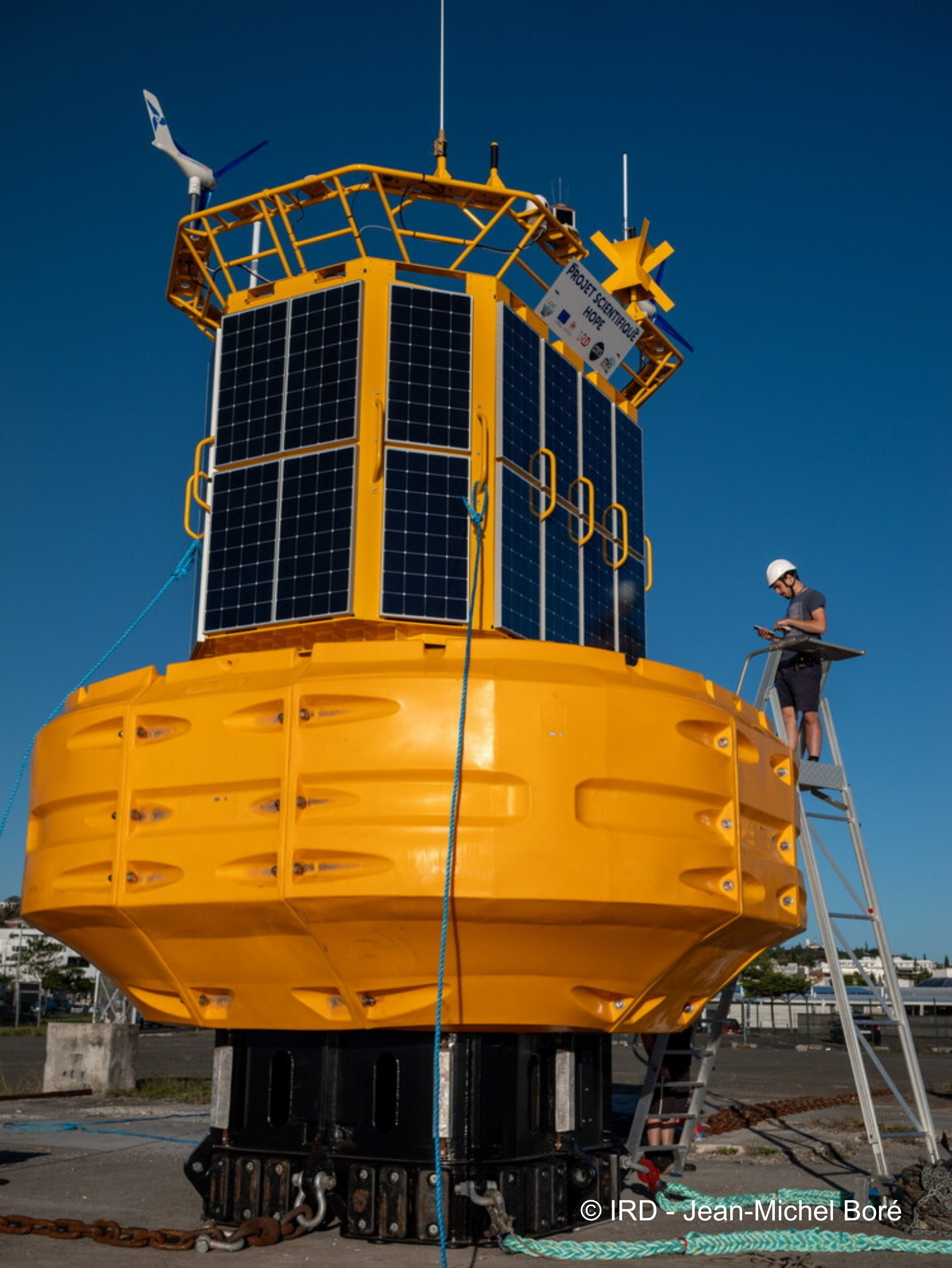
Bonnet uses a high-tech buoy, about 8.6 meters tall and 5 meters wide, equipped with its own lab. This smart buoy collects and transmits data in real-time via satellite. ‘It was originally designed for coastal waters,’ Bonnet explains. ‘But we customised it for our project to work in the open ocean. It sends its instruments down to another 100 meters, which is the illuminated ocean layer where carbon is fixed. Then 6 instrumented mooring lines installed around the buoy study processes leading the carbon storage in the deeper part on the ocean.’
This buoy helps Bonnet and her team to understand the ‘alternative’ carbon pump in greater detail. ‘We need to study the ocean at the hour scale because plankton have relatively short lifespans, generally only a few days,’ says Bonnet. ‘Continuous observation of plankton populations and environmental factors controlling them cannot be done manually. The buoy, with its 10 to 12 sensors, does this automatically. It collects many physical, chemical, and biological parameters, like water samples, filters them, and stores them safely. The buoy is ‘intelligent’, which helps manage everything and keeps the sensors safe in rough weather. Each sensor has its own way of processing data, which makes things complex.’
The team also uses another tool called the SOCRATE (Simulated Ocean Water Column with Automated Sampling), which was designed for the project. It is a 6-meters tall, automated column that mimics ocean conditions. It includes a wave simulator to reproduce water movements and can be adjusted to different environmental conditions. Cameras record particles sinking down, which helps compare lab results with what is happening in the ocean. The SOCRATE column adds more data to what the buoy gathers, and the researchers cannot get directly from the ocean.
Global maps
Fieldwork in the South Pacific is now starting. ‘Our plan is to gather data for two years in the tropical Pacific and then spend another year in a different tropical ocean for comparison’, Bonnet says. ‘Our main goal is to create global maps that show how much carbon is captured by various diazotroph species found in oceans worldwide. We typically find three to four major diazotroph species in every tropical ocean, and we want to map how much carbon each species captures on a global scale.’
Sophie Bonnet's research suggests that oceans would play an even bigger role than previously believed in reducing atmospheric CO2 levels and combating climate change, which is why her ERC project is named Hope. ‘In our lab experiments, we simulated how the diazotroph Trichodesmium, a species found globally, sinks in the ocean. We wanted to see how much carbon remains at a depth of 1000 meters after 10 days. Surprisingly, over 50 percent of the carbon was still there, indicating significant unaccounted carbon sequestration. If we confirm these results in the field and extrapolate these findings to the entire global ocean, it suggests that a considerable amount of carbon is being sequestered without us realising it.’
Biography
Dr Sophie Bonnet is an oceanographer at the Mediterranean Institute of Oceanography (M.I.O, Marseille, Nouméa) at the Institut de Recherche pour le Développement (IRD). She focuses her research on the interactions between marine micro-organisms and the carbon, nitrogen and iron cycles. She has coordinated several international oceanographic expeditions and published ~100 articles. In 2019 was awarded the national Academy of Science Medal ‘Christian Le Provost’, a prize intended to reward the author for innovative and outstanding research in oceanography.
Further reading
Diazotrophs are overlooked contributors to carbon and nitrogen export to the deep ocean | The ISME Journal (nature.com)
Natural iron fertilization by shallow hydrothermal sources fuels diazotroph blooms in the ocean | Science


